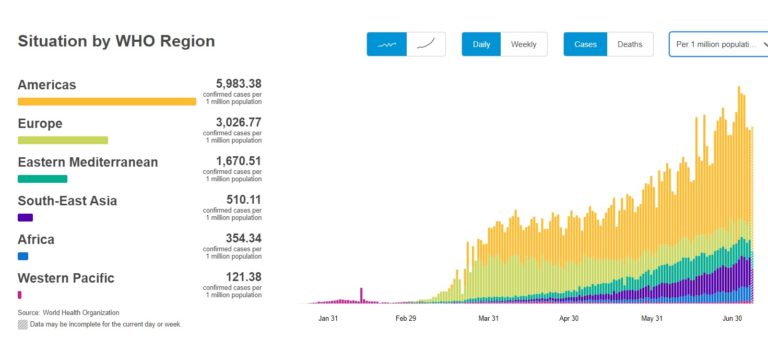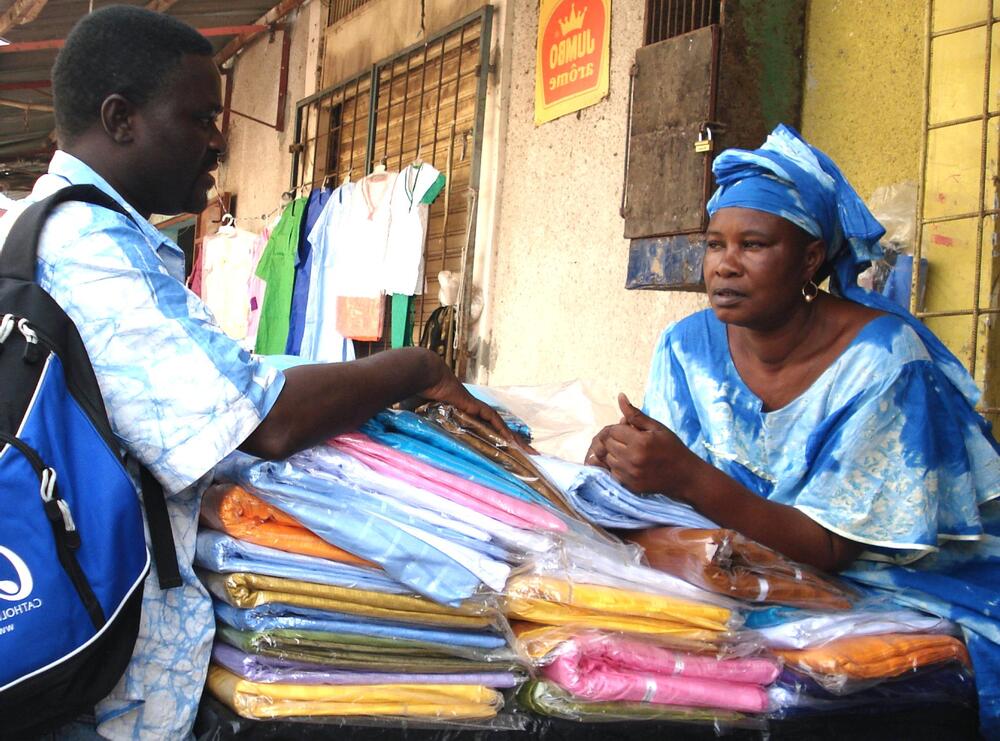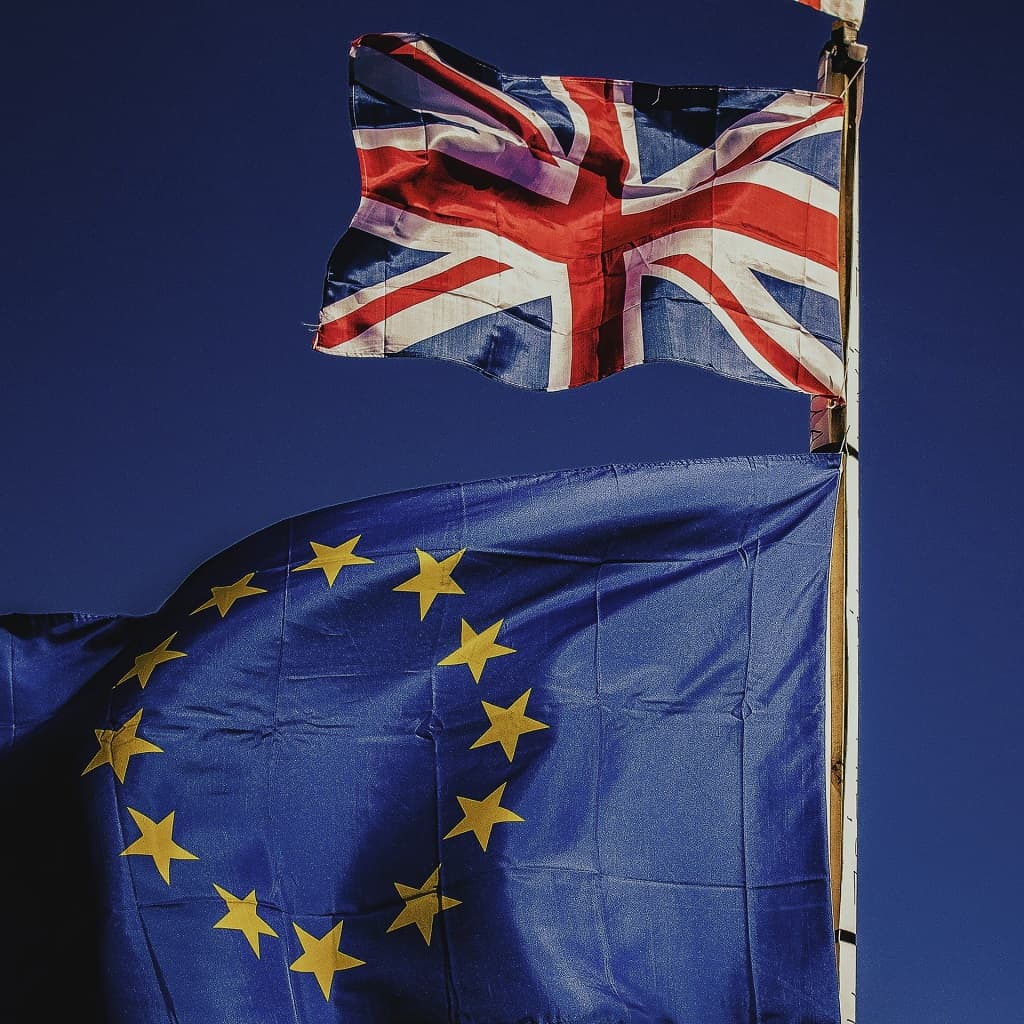The development community and most governments have had to largely abandon economic growth plans to respond to COVID-19. While gender concerns remain and are embedded in these hyper efforts, the consequences for women in Africa go far beyond. The question arises: How resilient are African economies to COVID-19 shocks and how will women fare when economies return to normalcy? The answer, it turns out, has everything to do with a uniquely African cultural feature: the fact that Africa’s resilience largely depends on its women. But, as we shall see, this is not enough. What is needed is a level playing field across the world to ensure equitable access to treatment and vaccines to all regions, Africa included.
First, consider the pre-COVID situation. As 2020 began, Sub-Saharan Africa (SSA) as a whole and many of its countries were moving forward with economies growing at a good pace, including notable advancements in primary education and higher-level education, greater attention to women’s concerns, and by and large an optimistic future.
External partners were investing in the SDGs which were of high concern for the region, including SDG 5 “Achieve gender equality and empower all women and girls”, which has, as its raison d’être, “Providing women and girls with equal access to education, health care, decent work, and representation in political and economic decision-making processes will fuel sustainable economies and benefit societies and humanity at large.” The hope is that these goals, tracked by a set of 9 targets and 14 indicators are to be achieved by 2030.
Many aid programs have targeted women, including successful microloans to women entrepreneurs. Among them, the Women’s Leadership in Small and Medium Enterprises (WLSME) program launched by the World Bank in partnership with USAID, operated from 2011 to 2016 with some notable success. For example, in Nigeria, evaluation findings showed that for those planning to start a new business, receiving a grant was especially beneficial to female entrepreneurs. It helped reduced gender gaps in the amount of time it took to start a firm and get it running.
All this was stopped by COVID-19. By mid-July 2020, the world was overwhelmed by the pandemic, with morbidity and mortality rates at levels never seen in a lifetime.
Based on available reporting, the virus outbreak in the Sub-Continent is currently relatively low compared to other regions but clearly on the rise. WHO reports over 350 confirmed COVID-19 cases per million people in Africa (WHO COVID Dashboard), with much larger numbers for the Americas (nearly 6,000), and even for South-East Asia (over 500).

For the SSA, the main impact now is coming from outside the region. Notably, the loss of markets for African exports and falling commodity prices to earn foreign exchange. Also, external donors and international institutions are pivoting attention to the virus, reducing dedicated human and financial resources for other developmental issues and goals, including those of SDG5.
For the sub-continent, governments have enacted travel restrictions, border closures, full or partial lockdowns (including marketplaces), and other social distancing measures, designed to contain COVID-19 spread.
Far beyond public sector regulations, the pandemic has and will have, a disproportionate effect on African women. And yet they are key to societal cohesion, social welfare, and resilience, so necessary now and in the coming years.
Regarding the health sector, COVID-19 preparedness and response are beginning to take center-stage and resources. We know that many, if not most African countries, have insufficient capacity to provide adequate maternal and child care services, and even less so for reproductive health. Existing human and health infrastructure resources will increasingly be diverted to COVID-19 to pursue testing and where positive cases identified, draw on such treatment facilities as exist for other purposes.
Access to Treatment and Vaccines: How Africa’s Resilience can be boosted
According to the WHO, there are some 220 vaccine trials underway and it is difficult to determine how many of these trials are being conducted in Sub-Saharan Africa. Or the extent to which protocols for informed consent are being followed regarding selection, medical history review (for example malaria prophylactics), incentives, post-vaccination support if needed.
Many participants in SSA are likely to be poor, illiterate women, but more on this later. Looking forward, once therapeutics and vaccine options become available, there will be global, regional, inter-country, and within-country competition for who is first in line. Without having sufficient foreign exchange and buying power, in a global market, small and even larger African countries, the so-called LMICs (Low and Middle-Income Countries), will have difficulty in competing with OECD and other rich countries.
One new organization, the Africa Centers for Disease Control and Prevention (Africa CDC), and one new global initiative “Access to COVID 19 (ACT) Tools Accelerator” (ACT-Accelerator) offer possible solutions for a more level playing field. In other words, Africa’s resilience, underpinned by African women’s entrepreneurial energy can clearly not, on its own, ensure equitable access. More is needed and that is what Africa CDC and the ACT-Accelerator offer.
Africa CDC has sought to serve as a more competitive regional procurement entity, clearly no easy task, as noted by the World Bank (5 May 2020):
“Since the onset of the novel coronavirus, the Africa CDC has been at the forefront through coordination of efforts of member states, sourcing of medical equipment, and providing guidelines on the implementation of social distancing among other efforts. Given African socioeconomic peculiarities and disruptions in global value chains, there have been challenges in delivering this mandate. These include difficulties in enforcing social distancing in urban slums, testing in fragile and conflict-affected countries, insufficient testing kits, to name a few.”
The ACT-Accelerator objective is to speed the development of treatment and vaccines, and equitable access to low- and middle-income countries.
The ACT-Accelerator is expected to be “a path to the accelerated development, equitable allocation, and scaled up delivery” of 500 million diagnostic tests to LMIC’s by mid-2021, 245 million courses of treatments to LMICs by mid-2021, and 2 billion vaccine doses, of which 50% will go to LMICs by the end of 2021.
To achieve this, however, US$31.3 billion will be required in funding for diagnostics, therapeutics, and vaccines, of which US$3.4 billion has so far been pledged. An additional US$27.9 billion is therefore needed, including US$13.7 billion to cover immediate needs (i.e. US$17.1 billion is immediately required, of which US$3.4 billion has been pledged).
The investment required is significant, but it pales in significance when compared to the cost of COVID-19: the total cost of the ACT-Accelerator’s work is less than a tenth of what the IMF estimates the global economy is losing every month due to the pandemic. At the time of writing, over 550,000 thousand people have already lost their lives.
It is clear that the tools developed will benefit the whole world; the ACT-Accelerator pillars ensure in particular that LMIC’s have access to what they need to exit the pandemic.
We know that procuring medical supplies, and even access to new treatment and vaccines will only be successful if local communities – read women – accept, advocate, and ensure use. As these efforts hopefully go successfully forward, women’s needs, access, and roles need to be taken into explicitly into account.
COVID-19 is a health problem, but it is much more. With increasing virus spread, the existing gaps in women’s education and lack of access at all levels will further adversely impact women. As noted by the World Bank:
“…in most African nations, significantly more girls than boys are out of school. In some countries, fewer than three girls are in school for every four boys. For children in school, learning outcomes have been persistently poor, leading to huge gaps in basic cognitive skills—literacy and numeracy—among children, young people, and adults. The literacy rate of the adult population is below 50 percent in many countries, and functional literacy and numeracy are even lower.”
Without basic cognitive skills and a full understanding of the reasons for preventive action, women’s ability to act appropriately is likely to be significantly constrained.
Unequal access to education opportunities, early marriage rates of young women, and responsibilities for unpaid care and housework, including care for the sick, translate into economic opportunity inequality.
At a basic skill level, economic hardship due to COVID-19 is greater for women as they comprise over 90% of the informal worker force in SSA, and informal sector jobs are particularly at risk during a pandemic.
Another COVID-19 gender dimension is linked to agriculture and food security. Most food consumed in SSA is produced on small-scale family farms. In many countries, 40-60% of the farmers are women who often lack equal access to quality seeds, fertilizers, good land, technical advice, and new technologies. Moreover, they need to find time to get goods to market so that the money earned can purchase food for their families.
Women also face limited access to financial institutions, skill training, and labor opportunities. They are excluded from key networks and their outreach is limited by social and legal constraints. Typically, women control fewer assets and must shoulder the burden of managing increased household responsibilities whenever a new health crisis arises.
According to a World Bank report, Profiting from Parity: Unlocking the Potential of Women’s Business in Africa, women engaged in business often do not have the same access as men to large and diverse social networks that can support growth and competitiveness.
Another major research organization, the CGIAR, a nearly 50-year-old global research partnership that brings together 15 top-notch international research centers has just this year integrated research and knowledge on COVID-19’s impact on women into its overall research plans. For this purpose, it has established a new platform “Generating Evidence and New Directions for Equitable Results” (GENDER). This is added to its long-established research goals that span from reducing rural poverty, increasing food security, and improving human health and nutrition to the sustainable management of natural resources and addressing the interface between animal-human-environmental health (One Health).
For Sub-Saharan African women, the combined results of all these efforts could prove crucial to a better future.
However, COVID-19 is not the only threat. As I reported on Impakter, massive locust swarms in East Africa and environmental degradation virtually everywhere affect crops. As food losses are exacerbated by the effects of COVID-19, women will be on the frontline in preventing a “food pandemic”. Women’s role in Sub-Saharan Africa in this respect will be critical.
Sub-Saharan Africa must depend on its women to salvage what is likely to be an exceedingly difficult period ahead. The future will be much more devastating unless governments and the development community treat gender considerations as a priority in dealing with COVID-19 and continue to do so ahead of the next endemic, epidemic, and pandemic.
EDITOR’S NOTE: The opinions expressed here by Impakter.com columnists are their own, not those of Impakter.com. In the featured photo: Woman entrepreneur Senegal – USAID microloan program Photo by Karen Cobos USAID on Pixnio








